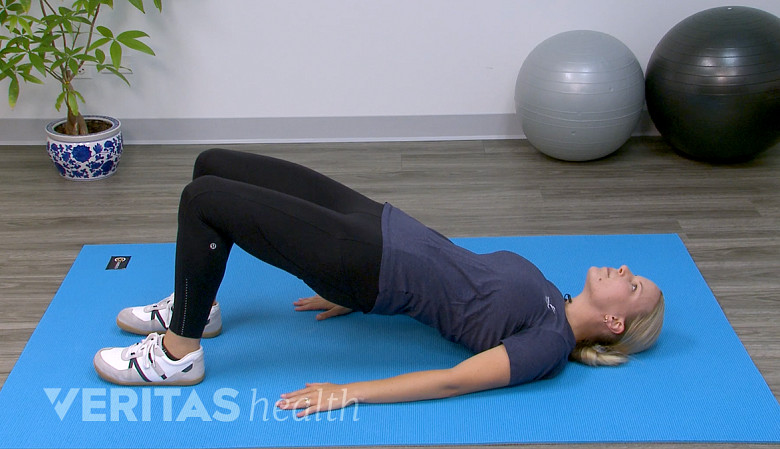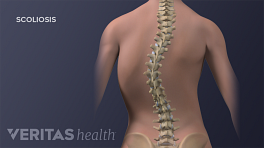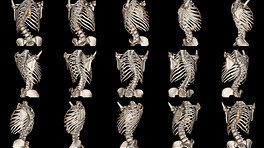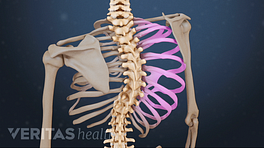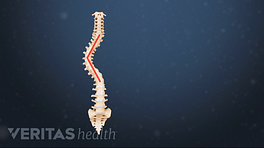Even though rigid bracing has been the standard in nonsurgical treatment of scoliosis for many decades, some controversy continues regarding its efficacy. Some in the medical community claim that rigid bracing is not more effective than observation or perhaps other treatments, such as soft braces and/or exercises, are better.
Below is an explanation for why current data back rigid bracing as the most effective nonsurgical treatment for stopping the progression of a scoliosis curve.
In This Article:
- Bracing Treatment for Idiopathic Scoliosis
- Types of Scoliosis Braces
- Controversy Over Whether Bracing Works
- Idiopathic Scoliosis Video
Why Bracing Has Been Hard to Prove
Here are some key reasons why some controversy has lingered regarding whether or not bracing for scoliosis works:
- Few random control trials. While numerous scientific studies have shown trends that rigid bracing lowers the risk for a scoliosis curve to progress, most of them were small studies and not randomized. Without a random control group, the findings are considered weaker and do not meet the most rigorous of scientific standards.
There are some good reasons more studies about scoliosis bracing do not include random control trials. For one, few parents would be willing to let a random decision decide their child’s scoliosis treatment. Another reason is if a certain treatment method is already considered superior—in this case bracing for scoliosis—there are some ethical considerations involved with purposely allowing some patients to receive an inferior treatment or no treatment at all.
- Patients inaccurately report brace adherence. For many decades, every scientific study about scoliosis bracing relied on patients (or their parents) to report how many hours per day they were wearing the brace. However, many patients either exaggerated how many hours they were wearing the brace or simply struggled with tracking the hours accurately. As such, many studies that supposedly failed to find benefits of bracing were probably filled with people who claimed to be wearing the brace as prescribed when in fact they were not. Newer technologies today can use heat sensors to track how many hours a patient is in the brace, so studies are getting more accurate data on the efficacy of bracing.
- Wrong brace design or usage. While probably less common today, there have been cases where a brace did not fit or was designed wrong from the start for the patient. There have also been cases where a patient might not have been wearing the brace tight enough or the brace kept coming loose without the patient realizing it (such as when sleeping).
- Bracing does not work for everyone. Even if the bracing is done as prescribed, there are cases where bracing simply does not work. The reasons for this are not fully understood, but experts suspect that some curves—especially those that start in early childhood—are simply more likely to progress.
In 2013, a study published in The New England Journal of Medicine provided the strongest scientific evidence to date that rigid braces work for scoliosis treatment. Unlike previous studies, this one included more than 100 patients in a randomized trial. Most doctors agree that this study validates the medical community’s decades-long recommendation on bracing.
Rigid Braces More Effective Than Soft Braces
One big drawback of a rigid brace is that it is uncomfortable to wear. Many adolescents—and sometimes their parents—reject the idea of wearing a hard brace even if they believe it works. As such, researchers and companies have attempted to meet the demand for a soft brace to treat scoliosis.
Soft braces are made of a somewhat flexible fabric and a series of tight straps that cross the body, such as from the crotch and hips, over the shoulders, and around the torso in various directions.
While soft braces are marketed as being an effective and more comfortable alternative to rigid braces, the scientific data to date does not back that assertion. In one case, a study showing limited effectiveness for soft braces had to later be retracted because one of the authors did not adequately disclose a connection to a soft brace company.
Exercise Cannot Replace Bracing
Strengthening exercises promote a strong, flexible back, reducing the progression of scoliosis.
There is some disagreement within the medical community as to whether special exercises, such as physiotherapeutic scoliosis-specific exercises (PSSE), can reduce the need for rigid bracing and/or surgery. While some research indicates there have been cases where specific exercises have reduced the size of a curve, the evidence thus far is scientifically weak.
Current recommendations are that exercise is good for keeping the back strong and flexible regardless of whether scoliosis is present. If a scoliosis curve is at risk of progressing, it is fine to try an exercise program under the guidance of a medical professional. However, rigid bracing should still be the primary treatment option if the curve is either already progressing rapidly or at least 25 degrees.

